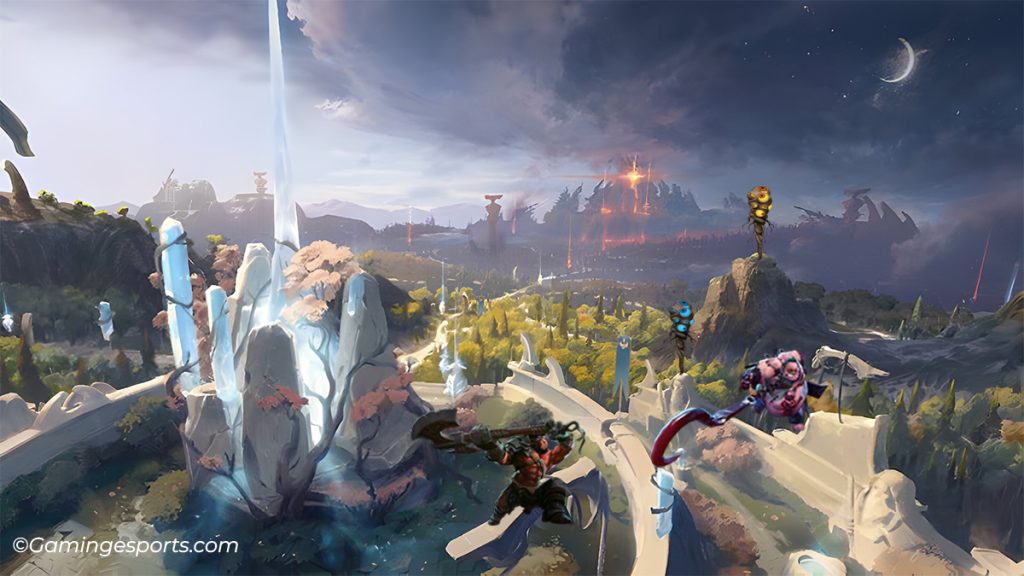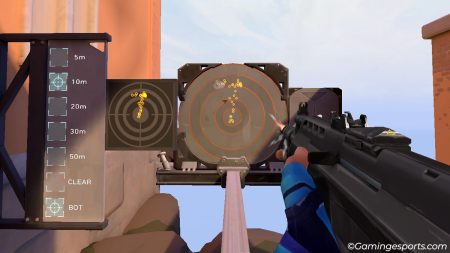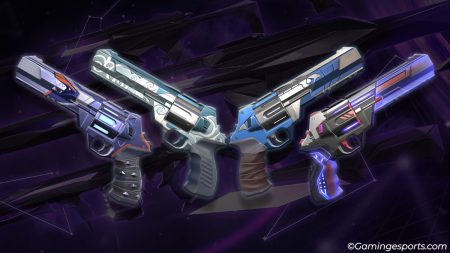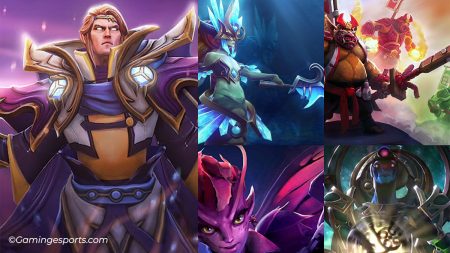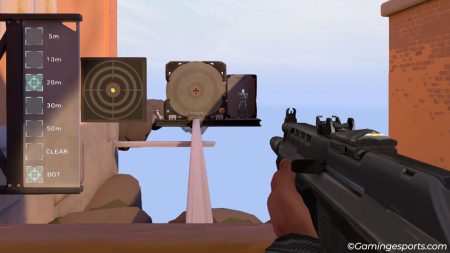Ganking and Warding go hand-in-hand together, setting up the stage for epic team fights between the attacker and the defender that Dota 2 is renowned for.
Ganking allows you to secure and ward objectives around the map, whereas warding allows you to set up or evade an enemy gank. Both maneuvers require strategic planning and proper communication to be executed successfully.
For example, Ganking relies on a combination of different factors, such as the hero you pick, along with its items and timings for it to be successful.
Conversely, Warding can be used to provide vision on the map or deny vision to the enemy. Being efficient with the observer and sentry wards while warding will help your team win the vision game.
Let’s dive into more details.
Table of Contents
What is Ganking?
Ganking is the act of roaming around the map to gain an objective or a kill on an enemy hero, and it is usually done during the early stages of the game.
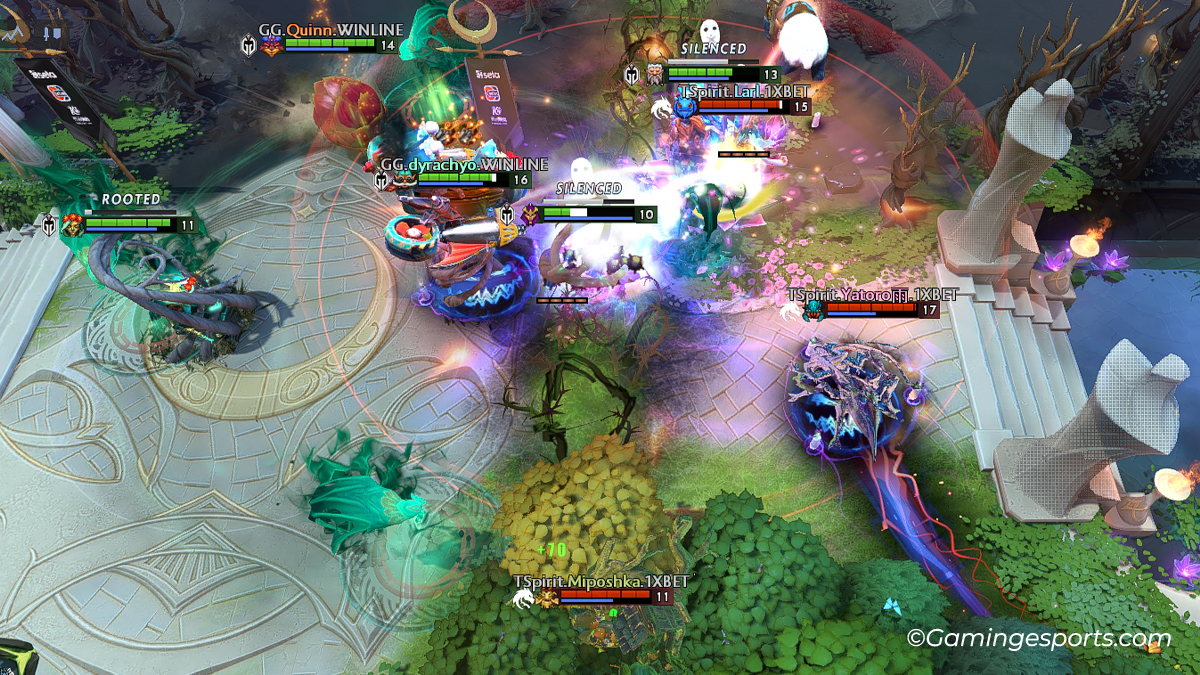
This job usually belongs to the mid-laner and roaming support role. Other heroes can also fill in this role, granted they have high mobility and can get in and out of fights quickly.
Most ganks are carried out when you are contesting for enemy objectives, and the way they’re carried out relies on three major factors. Let’s go over them briefly.
Heroes
Most ganking heroes have the ability to close the distance between them and the enemy. Some heroes even have the ability to stun or slow. These abilities allow you to catch your enemies off-guard and surprise them with an attack.
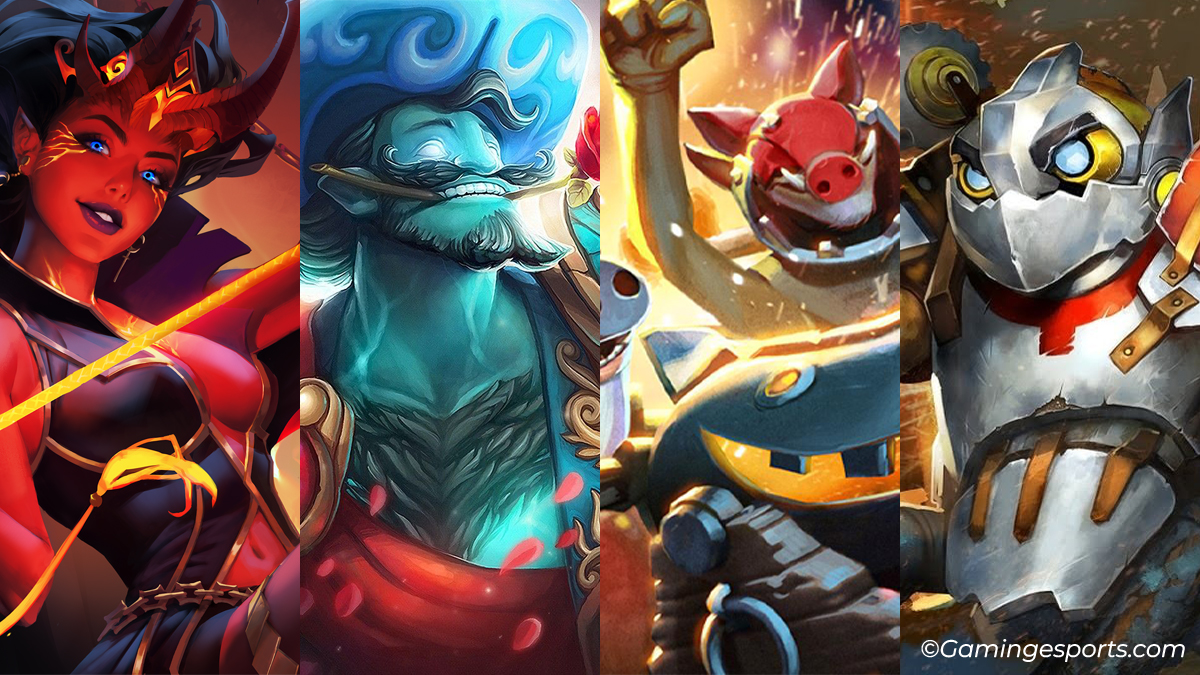
Heroes like Queen of Pain, Storm Spirit, Techies, and Clockwerk are known for their surprise initiation, making them hard to predict and dodge.
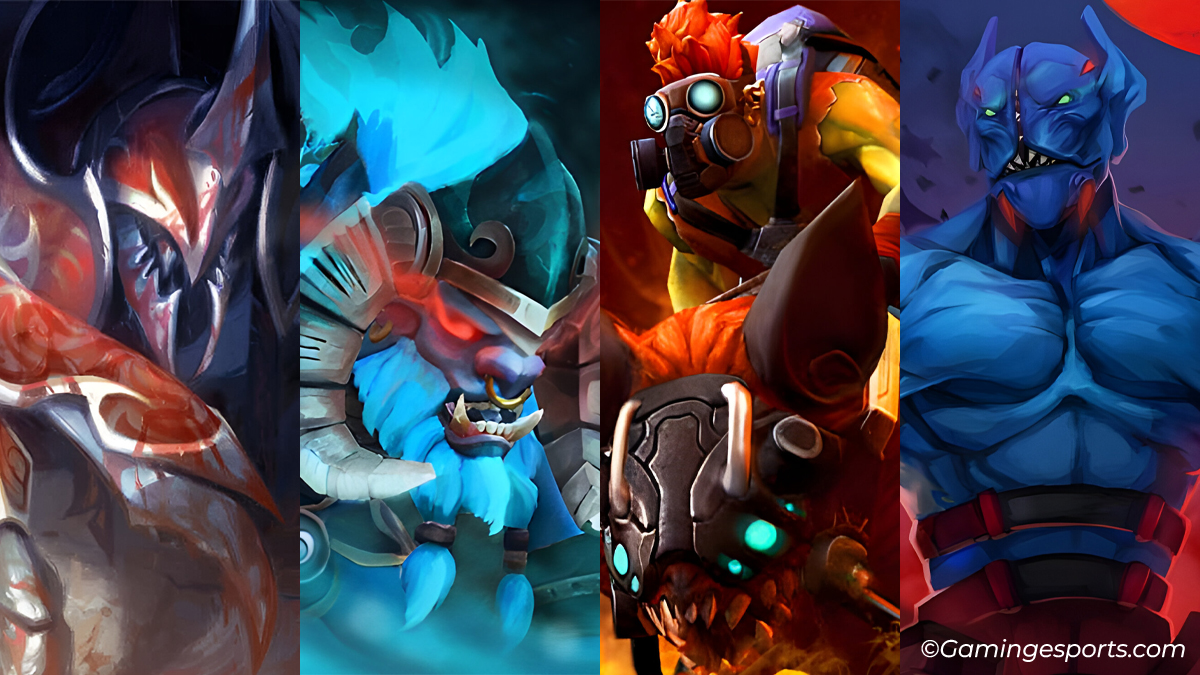
Other heroes like Nyx Assassin, Spirit Breaker, Batrider, and Night Stalker rely on their ability to chase, stun, silence, or slow the enemies while ganking.
Items
Heroes that do not have the ability to close the distance between them and their enemies such as Treant Protector, Tidehunter, Sand King, and Witch Doctor rely on items to initiate a gank.
To start a gank, you will need to itemize around ganking items such as TP Scroll, Smoke, Blink Dagger, or Wards. Here’s how these items work:
TP Scroll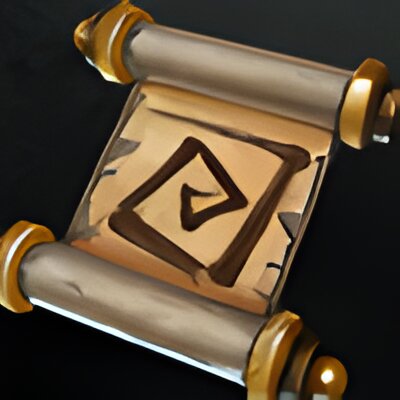
This item allows you to teleport to your allies and group up for a gank. You also gain one TP scroll after death.
Smoke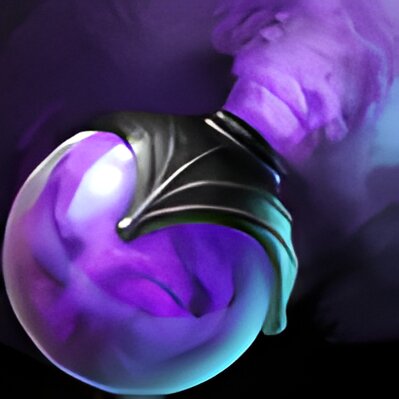
An item that hides you from enemy wards and can be used for a surprise attack. However, it has limited stock and should be used wisely.
Blink Dagger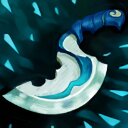
It is used to close the distance between you and your enemy. It can also be used to chase mobile enemy heroes.
Wards

They provide vision and help detect the movement of enemy heroes in a wide area.
Blood Grenade
This item is very effective in the early stages of the game. It slows and damages enemies in a small area over time.
That being said, it’s not absolutely necessary to purchase ganking items. I recommend using them only when you need to cover your team’s weaknesses.
For example, you should purchase wards and save them for nighttime if your team has ways to provide vision with abilities.
Similarly, you can avoid buying smoke if your team has control of map objectives over the enemy.
Timings
Another important factor affecting different heroes‘ ganking capability is their timings. Timings include the day/night cycle and their levels.
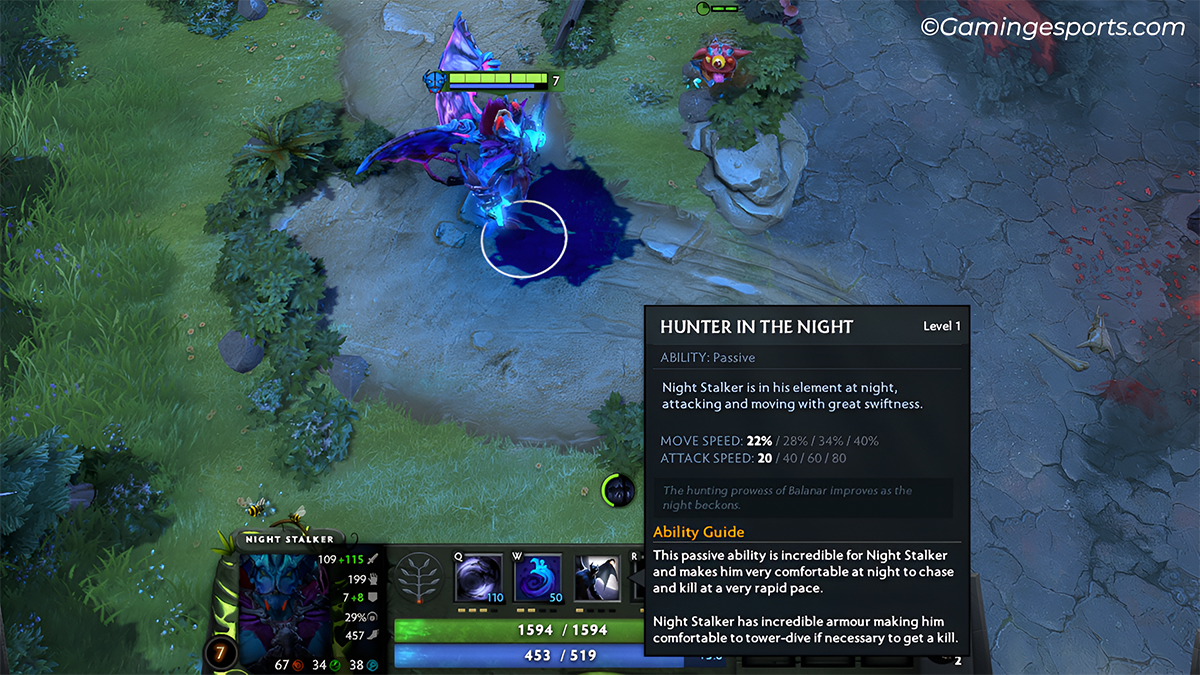
Some heroes gain bonus vision and movement speed, depending on the time cycle. Heroes like Batrider and Bounty Hunter are much better at ganking during the day, whereas Night Stalker and Slark rely on nighttime to gank.
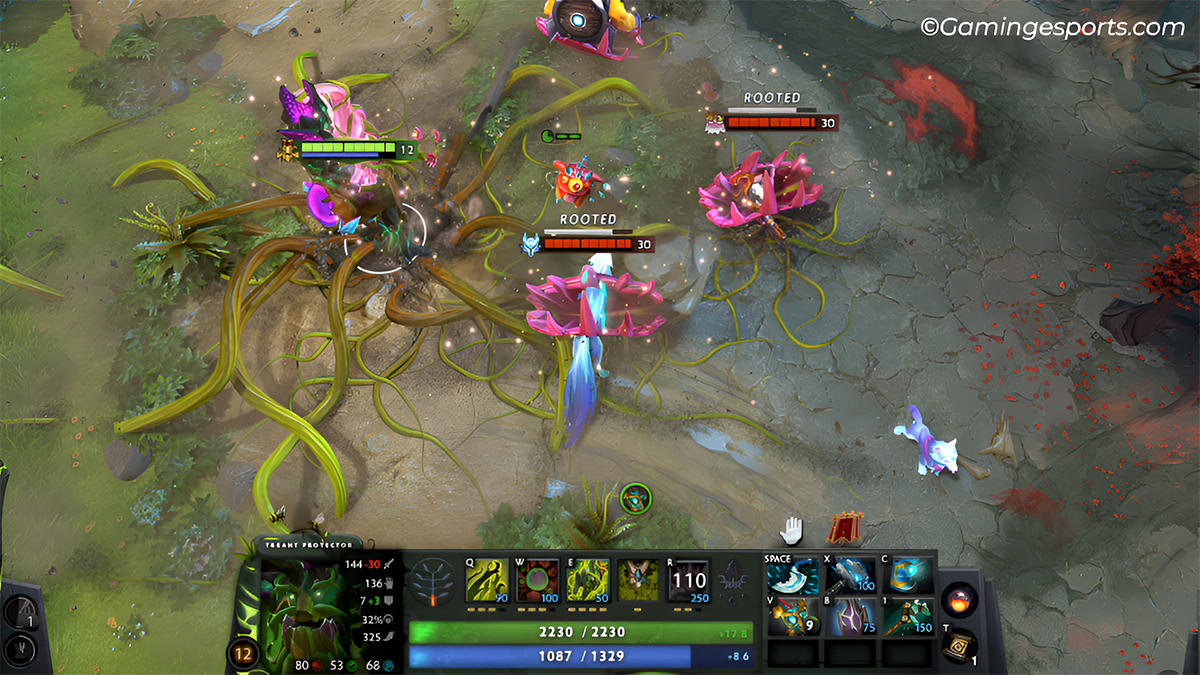
There are also some heroes that rely on their level to gank. For example, heroes like Disruptor, Lich, Bane, and Jakiro have the option to initiate a gank early in the game, as they have very strong starting abilities.
Likewise, some heroes rely on their ultimate ability to be able to gank effectively, like Clockwork, Slarder, and Treant.
When Should You Gank?
You should only look for a gank whenever you feel like you are strong enough to bring down an enemy.
Understanding your strengths and limits is necessary while ganking, as you may feed free bounty if you jump in without a plan. You are better off pushing lanes and farming if you’re not feeling confident in ganking.
You can also gank whenever your ally needs help from an enemy gank. However, if an enemy hero is already doing poorly in its lane, it is better to change your focus to getting objectives.
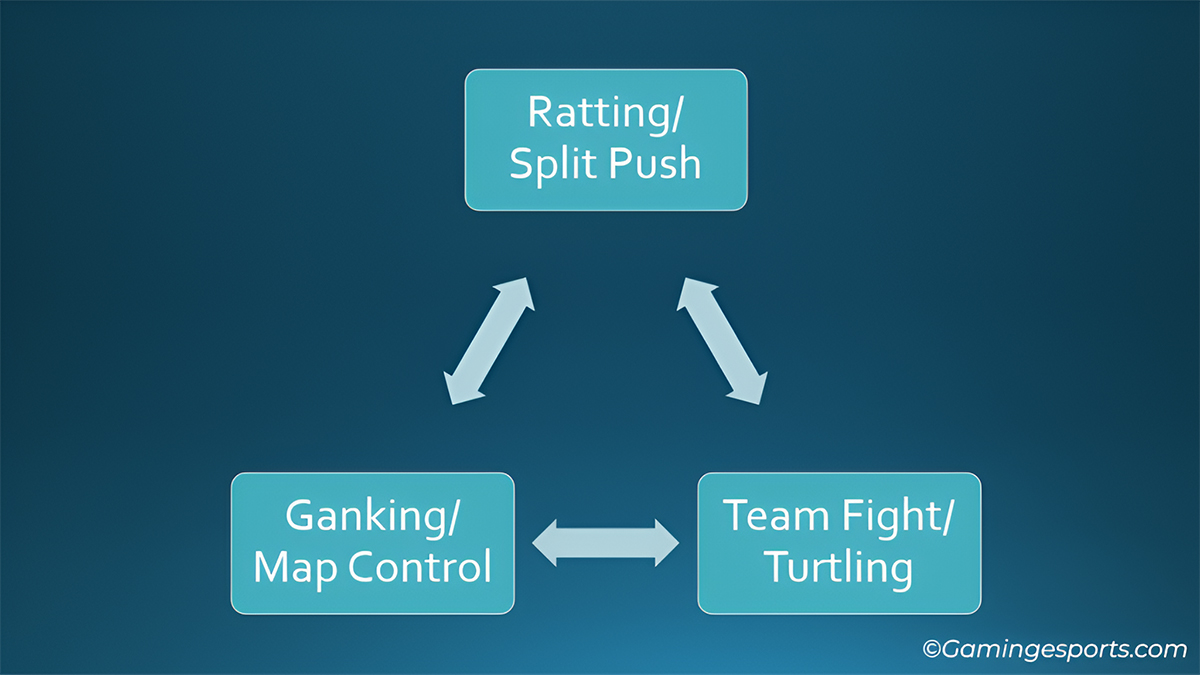
Tips: You should be in constant communication with your team as the game progresses. When you are taking objectives around the map, you should be ready to gank any enemy that tries to split-push and delay your objectives.
However, if the enemies are grouped together, it is not recommended to gank them, but you should instead look to split push to separate the enemies.
How to Avoid Enemy Ganks?
There are a few different ways to avoid ganks, depending on the state of the game. The first method is called Turtling, which is basically farming away from the enemy under the protection of a tower. This strategy only works well in the early game.
Turtling becomes ineffective in the later stages of the game. Your only viable option during the later phases is Grouping. Farming around the vision and the team will discourage enemies from launching ganks at you.
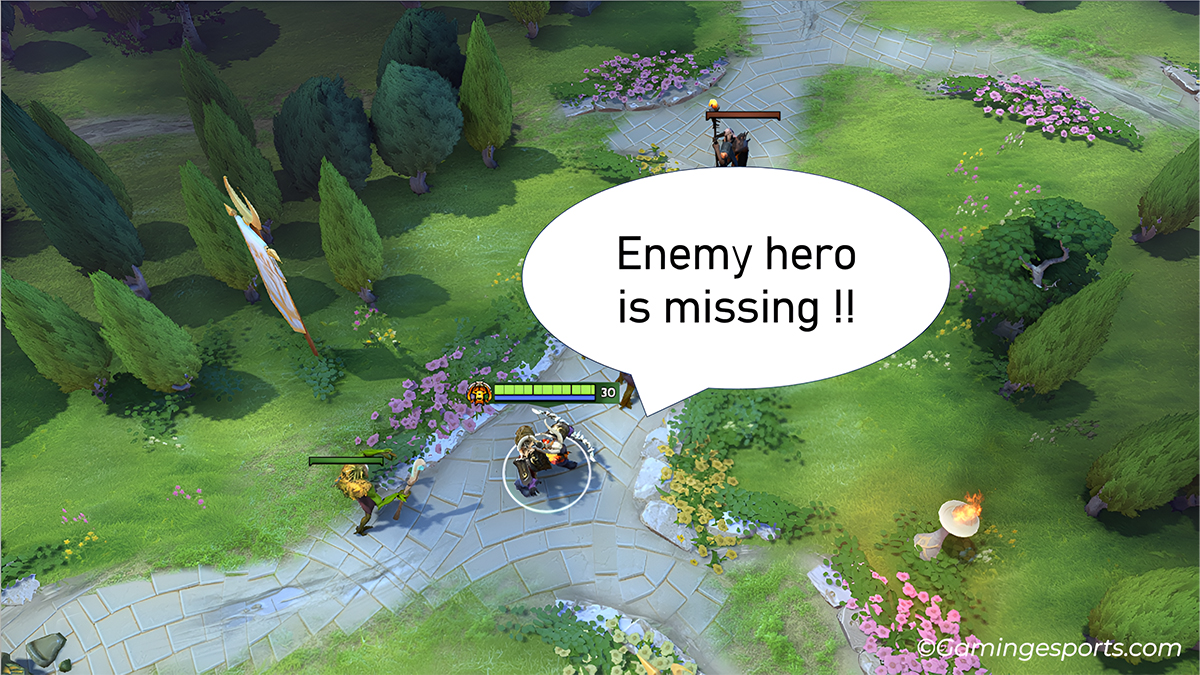
Tips: Again, communication plays an important role in avoiding a gank. It is necessary to relay information about the enemy to your allies every time you see them roaming the map. This can help your team predict the enemy’s next objective and strategize according to it.
Tips for Ganking
- Make sure to always carry wards, smokes, and TP scrolls in your backpack so that you can initiate or avoid the enemy gank.
- Make sure to keep an eye on the objectives on the map, which can help you reveal enemy positions.
- Only initiate gank when all your abilities are ready or when you know for sure that the enemies’ abilities are on cooldown.
- Buybacks are the ultimate counter to any successful gank by the enemy. So, always remember to save for buybacks in the later stages of the game.
What is Warding?
The game has a fog of war system that provides you with limited vision around you. Depending on the day/night cycle and terrain, your vision can vary from 800 to 1800 units.
Wards are the tools that will help you counter the visual limitation of the fog of war. They are planted in open areas or high-ground spots on the map which is usually carried out by support roles.
Wards help to detect enemy movement around the map, which can be used to predict their next move.
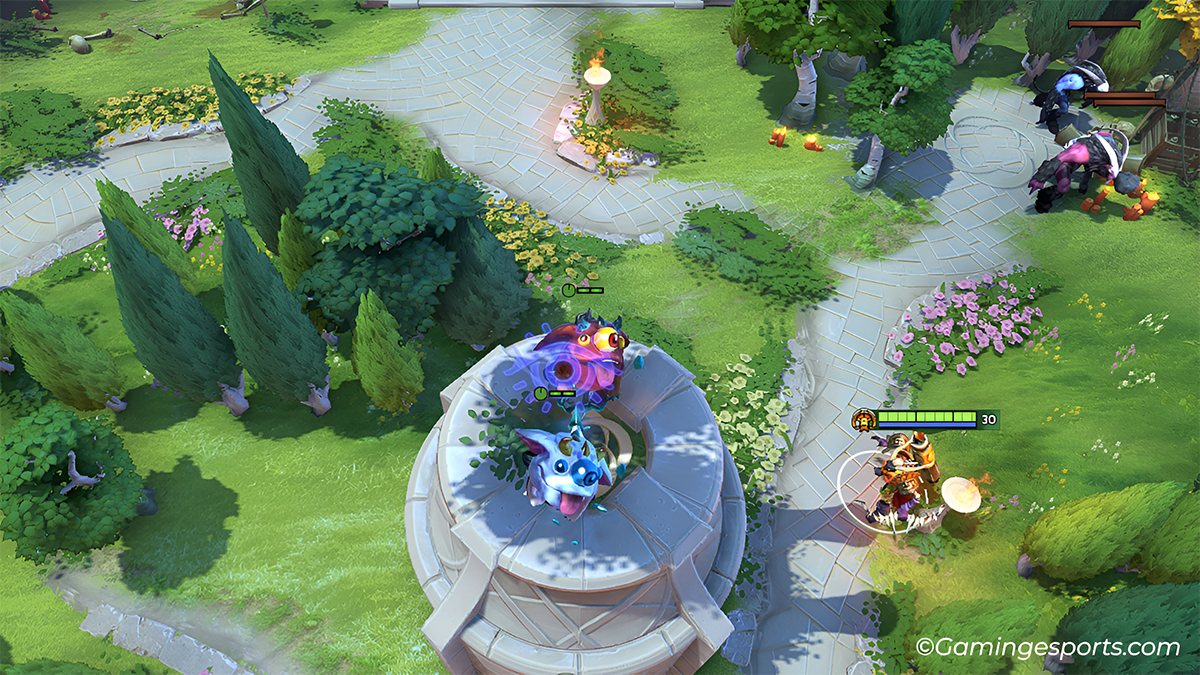
The game provides you with two different types of wards, which are the Observer ward and the Sentry ward. We will discuss how different types of wards can be used for gaining objectives on the map.
Observer Ward
The observer ward provides 1600 units of vision around it when it is placed on high terrain. But when it’s placed on low terrain, anything that can block vision (such as trees) will affect the ward’s range, producing vision wedges.
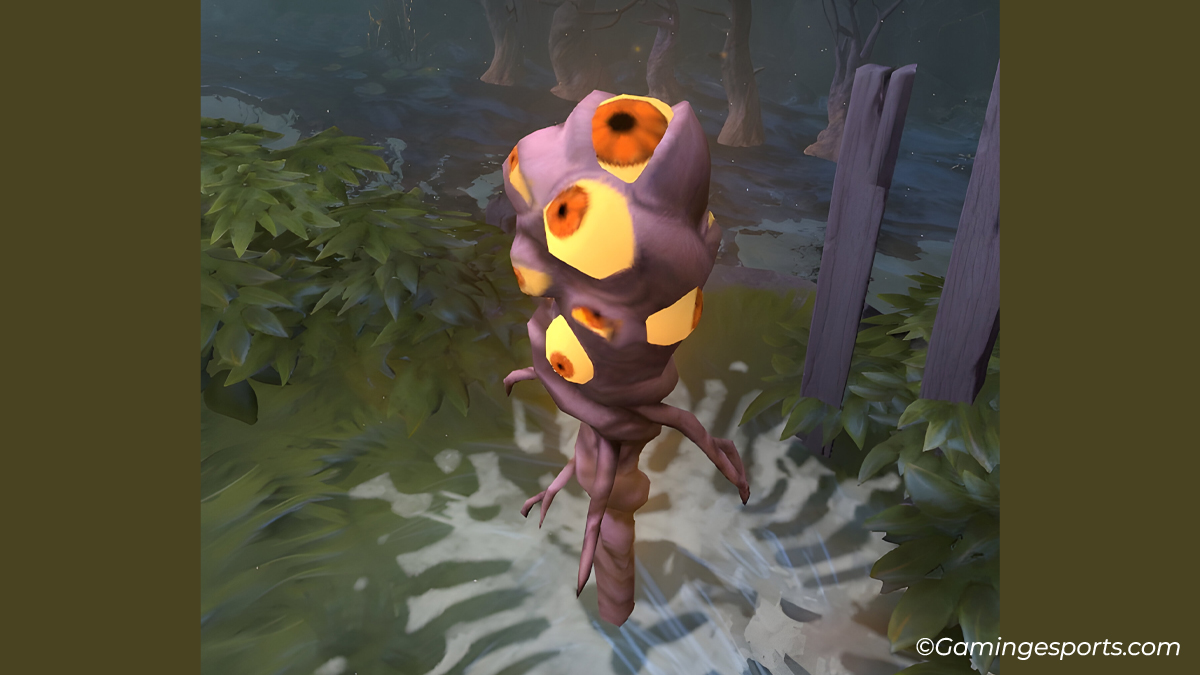
Sentry Wards
Sentry wards are used to deward enemy observer wards and detect invisible units around them. This item provides 1000 units of true sight around it and cannot be blocked. It doesn’t provide any ground vision like an observer ward.
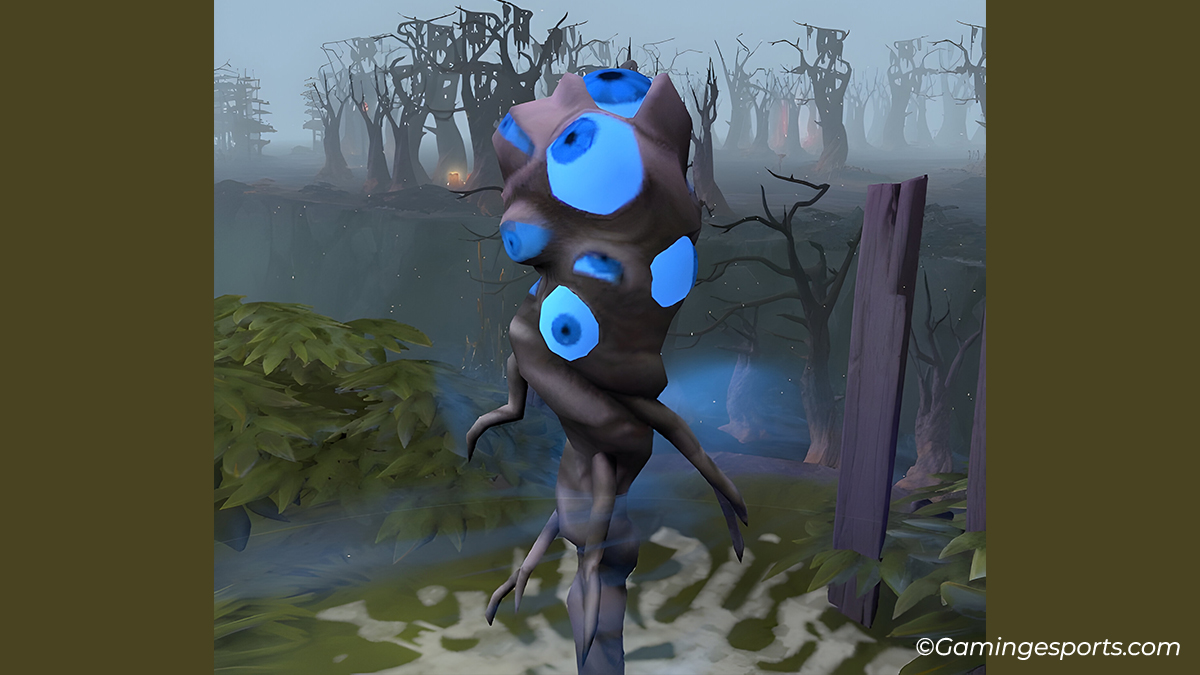
Wards are limited in the game, and they take time to get restocked. So, you should only use them when necessary. If you are running out of wards, using your units can be another way of securing vision around objectives.
When Should You Ward?
As we’ve already mentioned, wards are used to provide vision around objectives on the map. So, any team looking to engage in team fights or gain objectives should always carry wards with them.
Alternatively, wards can also be planted during smoke use. If your smoke breaks during a roam, then it means that an enemy is nearby. Here, wards can come in handy to quickly provide you with vision over the fog.
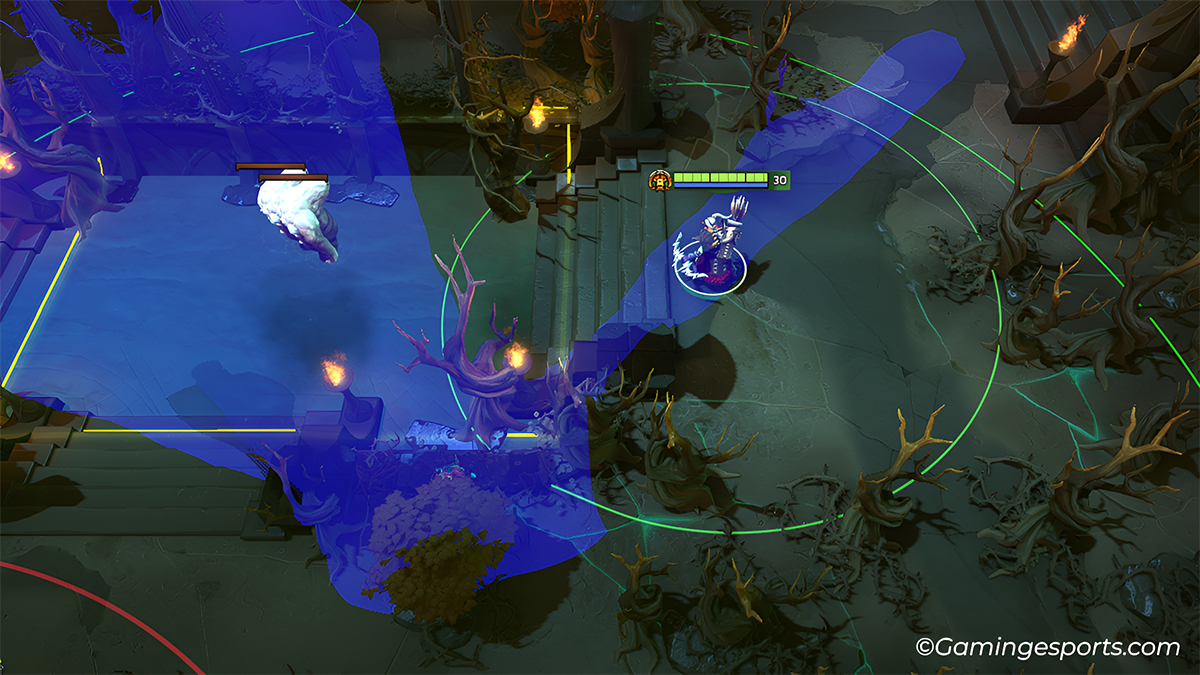
During the nighttime, most of the hero’s vision radius is reduced. This is the perfect time to use the ward in an area where the enemy might decide to gank.
Wards can also be used aggressively to block neutral creep spawn camps, scout enemy couriers, and movements near tormentors or jungles.
Dewarding
Wards are invisible units and can only be destroyed with attack damage. Similar to warding, you can plant a sentry ward in any suspicious area to catch enemy wards and deward them.
Warding and dewarding is a constant tug-of-war, and the victor is the one who is more efficient in doing so.
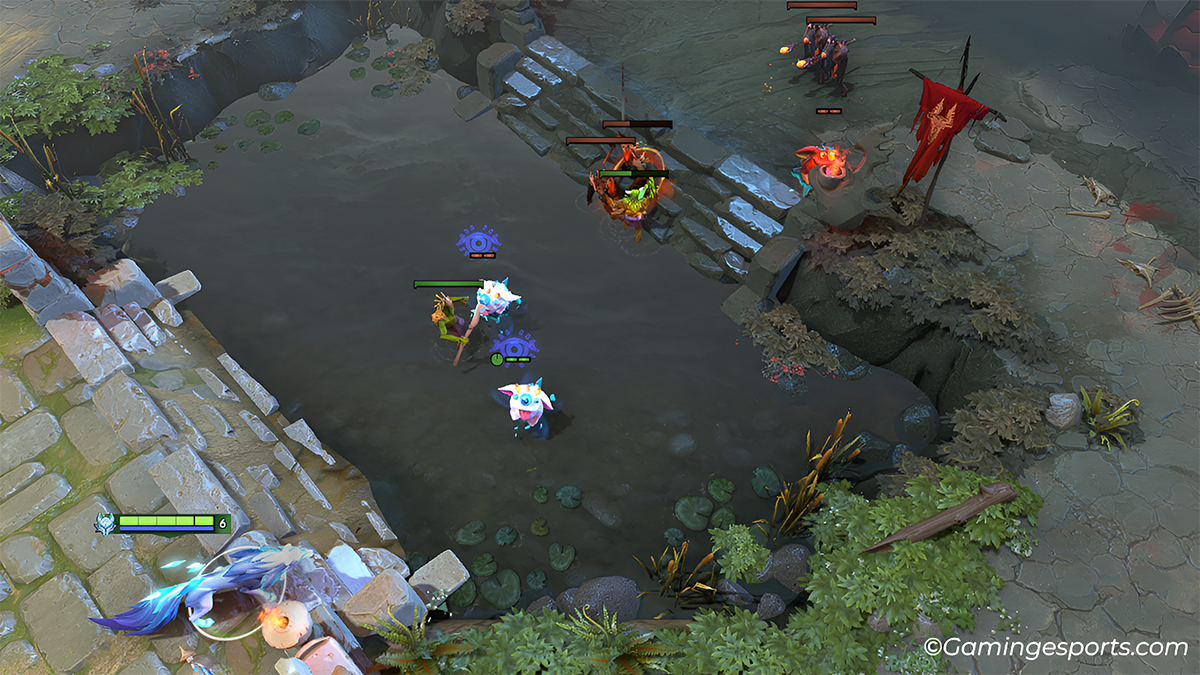
It is very important to understand when to go for a deward. You should only deward when the enemies show up on the other side of the map. Without knowing enemy positions, going for a deward can be risky and result in your death.
If you can summon or control units, you can use those units to help you deward as well.
Tips for Warding and Dewarding
- Wards can be passed to your allies if they are near you. This nifty trick can be used to deceive your enemy into dewarding, thinking you have warded the area.
- Wards take a total of two hits from the enemy hero to be destroyed. You can deny your ward after the first hit from the enemy hero.
- Gem of True Sight can be purchased to deward in the later stages of the game. Some heroes’ abilities, like Zeus’s Lightning Bolt, can also be used to detect nearby enemy wards.
- You can also purchase wards from enemies’ shops and diminish their stock if you are sneaky enough to get there.
- Controlled enemy or neutral creeps can also be used to provide vision around an objective. Harpy Stormcrafter is one of the best units for this job, as it provides 1800 units of vision around it during both daytime and nighttime.
- In high terrain and cliffs, it’s better not to deward sentry ward. This gives a false sense of security to enemies and can be used as bait.
- Wards cannot be used inside the fountain or Roshan’s pit but can be used to block your or enemy’s neutral camps. Be careful not to block your own camp while dewarding.
